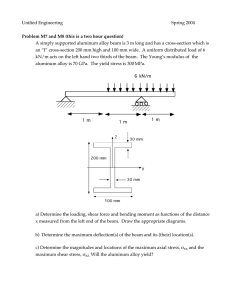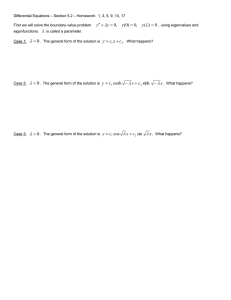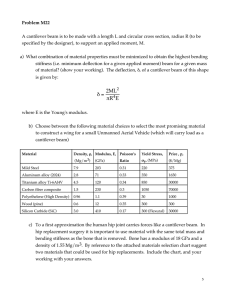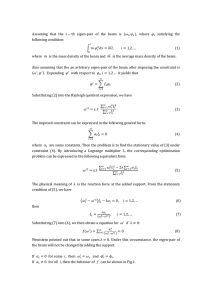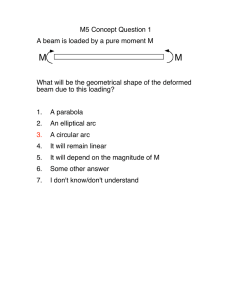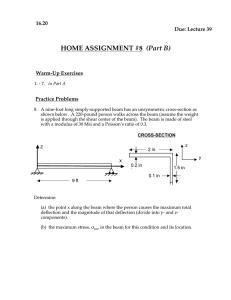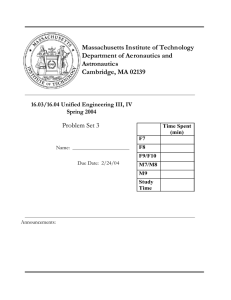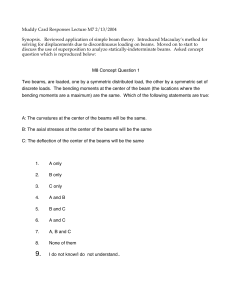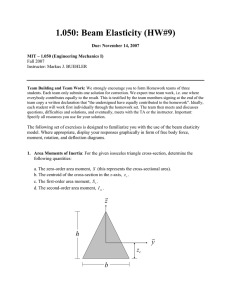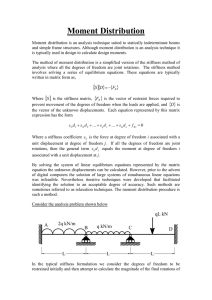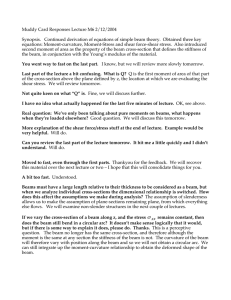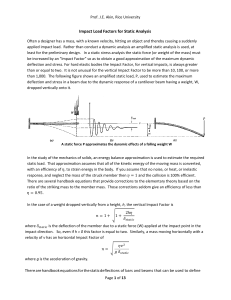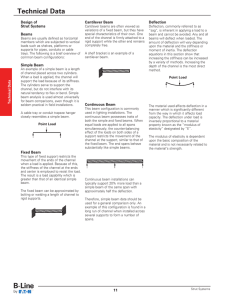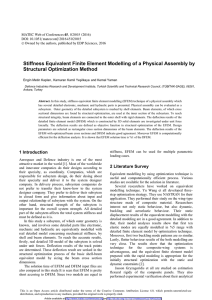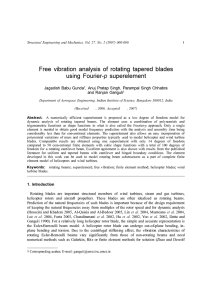Unified Engineering Spring 2004 Problem M6
advertisement
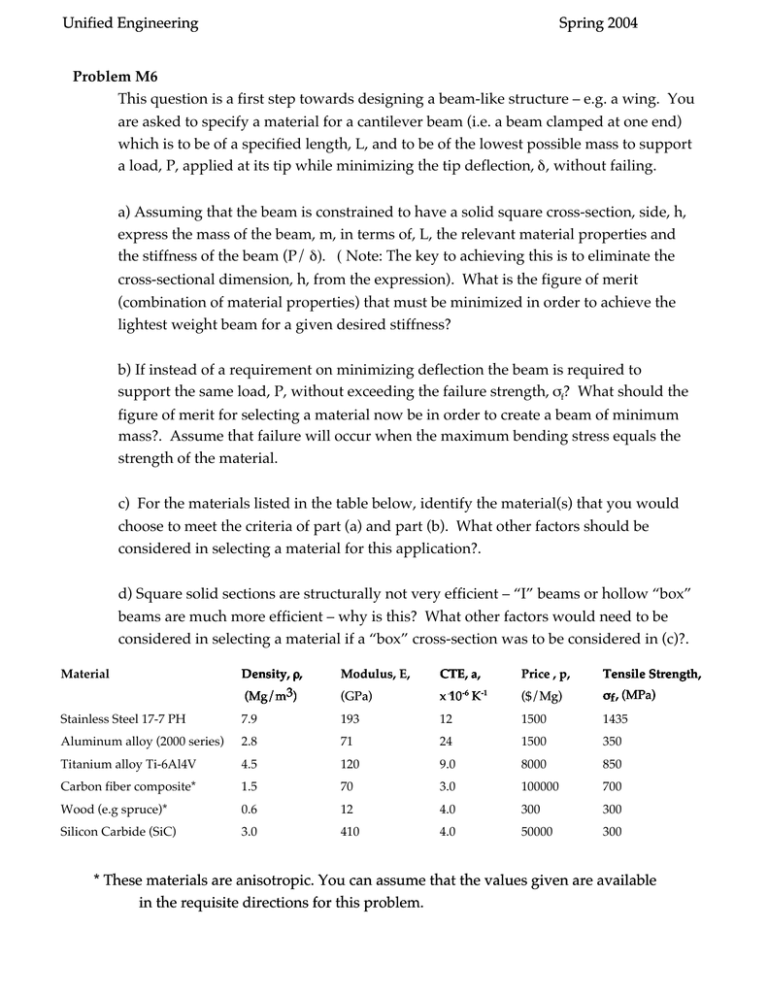
Unified Engineering Spring 2004 Problem M6 This question is a first step towards designing a beam-like structure – e.g. a wing. You are asked to specify a material for a cantilever beam (i.e. a beam clamped at one end) which is to be of a specified length, L, and to be of the lowest possible mass to support a load, P, applied at its tip while minimizing the tip deflection, d, without failing. a) Assuming that the beam is constrained to have a solid square cross-section, side, h, express the mass of the beam, m, in terms of, L, the relevant material properties and the stiffness of the beam (P/ d). ( Note: The key to achieving this is to eliminate the cross-sectional dimension, h, from the expression). What is the figure of merit (combination of material properties) that must be minimized in order to achieve the lightest weight beam for a given desired stiffness? b) If instead of a requirement on minimizing deflection the beam is required to support the same load, P, without exceeding the failure strength, sf? What should the figure of merit for selecting a material now be in order to create a beam of minimum mass?. Assume that failure will occur when the maximum bending stress equals the strength of the material. c) For the materials listed in the table below, identify the material(s) that you would choose to meet the criteria of part (a) and part (b). What other factors should be considered in selecting a material for this application?. d) Square solid sections are structurally not very efficient – “I” beams or hollow “box” beams are much more efficient – why is this? What other factors would need to be considered in selecting a material if a “box” cross-section was to be considered in (c)?. Material Density, r, (Mg/m3) Modulus, E, CTE, a, Price , p, Tensile Strength, (GPa) x 10 K ($/Mg) sf , (MPa) Stainless Steel 17-7 PH 7.9 193 12 1500 1435 Aluminum alloy (2000 series) 2.8 71 24 1500 350 Titanium alloy Ti-6Al4V 4.5 120 9.0 8000 850 Carbon fiber composite* 1.5 70 3.0 100000 700 Wood (e.g spruce)* 0.6 12 4.0 300 300 Silicon Carbide (SiC) 3.0 410 4.0 50000 300 -6 -6 -1 * These materials are anisotropic. You can assume that the values given are available in the requisite directions for this problem.
